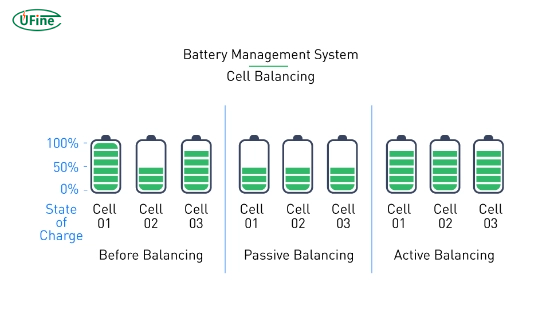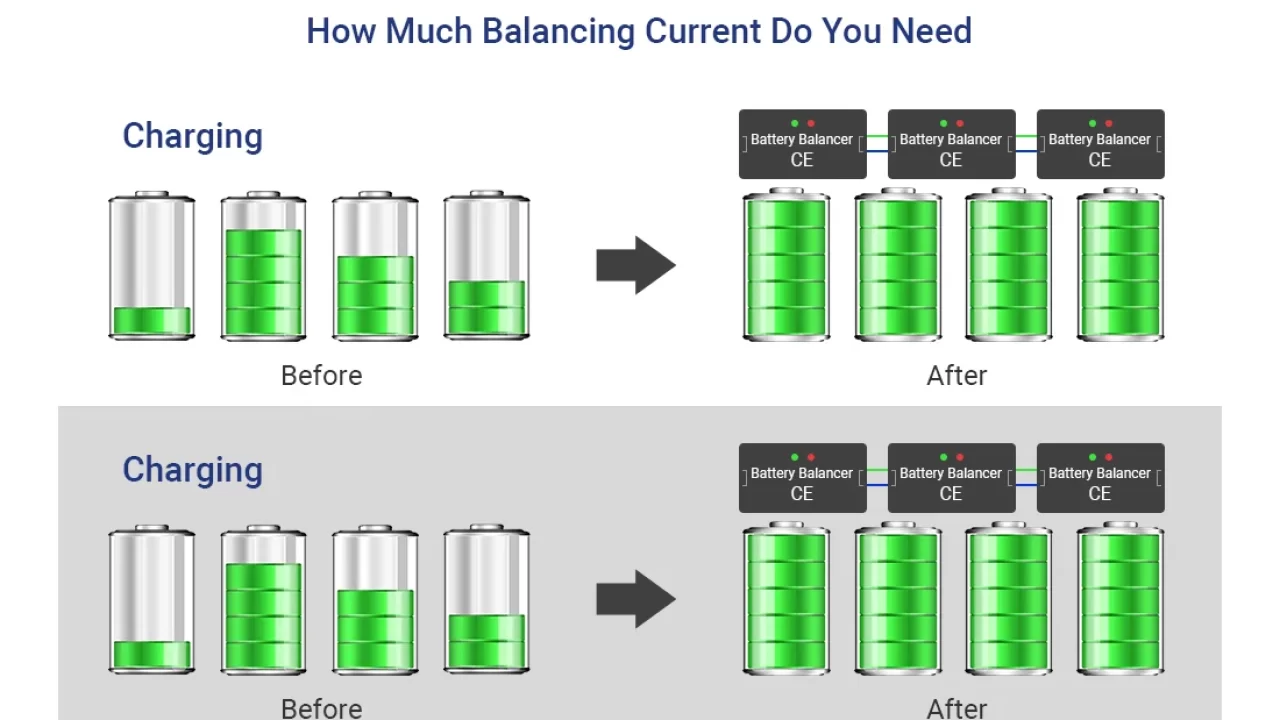A Comprehensive Guide to Battery Balancing and Battery Balancers
A Comprehensive Guide to Battery Balancing and Battery Balancers
Battery balancing is crucial for maximizing the performance, longevity, and safety of multi-cell battery packs. In this comprehensive guide, we will explore the concept of battery balancing and how CloudEnergy's advanced battery balancers play a pivotal role in ensuring optimal battery performance.
Understanding Battery Balancing
Battery balancing involves equalizing the State of Charge (SOC) across all cells in a battery pack. This process ensures that no single cell is overcharged or undercharged, which can reduce the overall capacity and pose safety risks. Imbalances in battery cells can lead to decreased efficiency and potential hazards.
The Process of Battery Balancing
Battery balancing operates through cell monitoring, imbalance detection, and charge redistribution. This process can be achieved using active or passive balancing techniques. Active balancing involves transferring charge between cells, while passive balancing dissipates excess energy as heat.
Delving into Battery Balancing Techniques
There are two primary methods of battery balancing: passive and active. Passive balancing, also known as resistive balancing, is simpler and cost-effective but less efficient as it dissipates energy as heat. Active balancing, on the other hand, transfers energy from higher-charged cells to lower-charged ones, enhancing efficiency but at a higher cost.
For example, passive resistive balancers are ideal for applications where cost is a concern, while active inductive balancers are used in scenarios where efficiency and performance are prioritized.
Real-world Applications of Battery Balancing
Battery balancing is essential across various industries, including electric vehicles (EVs), renewable energy storage, and portable electronics. In EVs, balancing ensures each cell contributes equally, enhancing range and performance. Renewable energy systems benefit from balanced battery packs by improving energy storage and reliability, while portable electronics experience extended battery life and safety.
Introduction to Battery Balancers
A battery balancer is a crucial component within a Battery Management System (BMS) that maintains the equilibrium of a battery pack. It comprises various components such as voltage sensors, control circuits, and balancing circuits that work together to monitor and balance the cells.
Operational Insights into Battery Balancers
Battery balancers function by either dissipating excess energy in passive balancing or redistributing energy in active balancing. Passive balancers are engaged when cells are overcharged, while active balancers operate continuously to maintain balance. The choice between the two depends on the specific application and performance requirements.
Exploring Types of Battery Balancers
Battery balancers can be categorized based on their balancing method and implementation features. Common types include passive resistive balancers, active inductive balancers, integrated balancers, and programmable balancers. Each type offers unique advantages and is suited for different applications.
Choosing the Right Battery Balancer
Selecting the appropriate battery balancer depends on factors such as battery chemistry, number of cells, and balancing method. It's essential to consider the specific needs of the application, such as efficiency, cost, and performance, to choose the right balancer.
CloudEnergy offers a range of high-quality battery balancers designed to meet diverse requirements. Explore our products.
Frequently Asked Questions (FAQs)
Q: How often should battery balancing be performed?
A: Battery balancing frequency depends on the application and usage patterns. Regular monitoring and balancing are recommended to maintain optimal performance.
Q: What should be done if a cell is identified as dead?
A: If a cell is identified as dead, it should be replaced to prevent imbalances and ensure the overall health of the battery pack.
Q: How does temperature affect battery balancing?
A: Temperature can impact battery performance and balancing.
It's crucial to monitor and manage temperature to ensure efficient balancing and prevent thermal ConclusionBattery balancing and balancers are essential for enhancing the efficacy and safety of multi-cell battery packs. By understanding and implementing proper balancing techniques, users can maximize battery performance and longevity. CloudEnergy provides advanced battery balancing solutions tailored to meet diverse needs. Learn more about our products.
Leave a Reply
- Golf Cart Lithium Battery Replacement for 2013 Club Car Precedent
- Upgrade Your Club Car DS with CloudEnergy Lithium Batteries
- Understanding LiFePO4 Charge Curves: A Comprehensive Guide
- Upgrading Your Golf Cart to Lithium Batteries: A Comprehensive Guide
- What Are the Best Battery Types for Off-Grid Living?